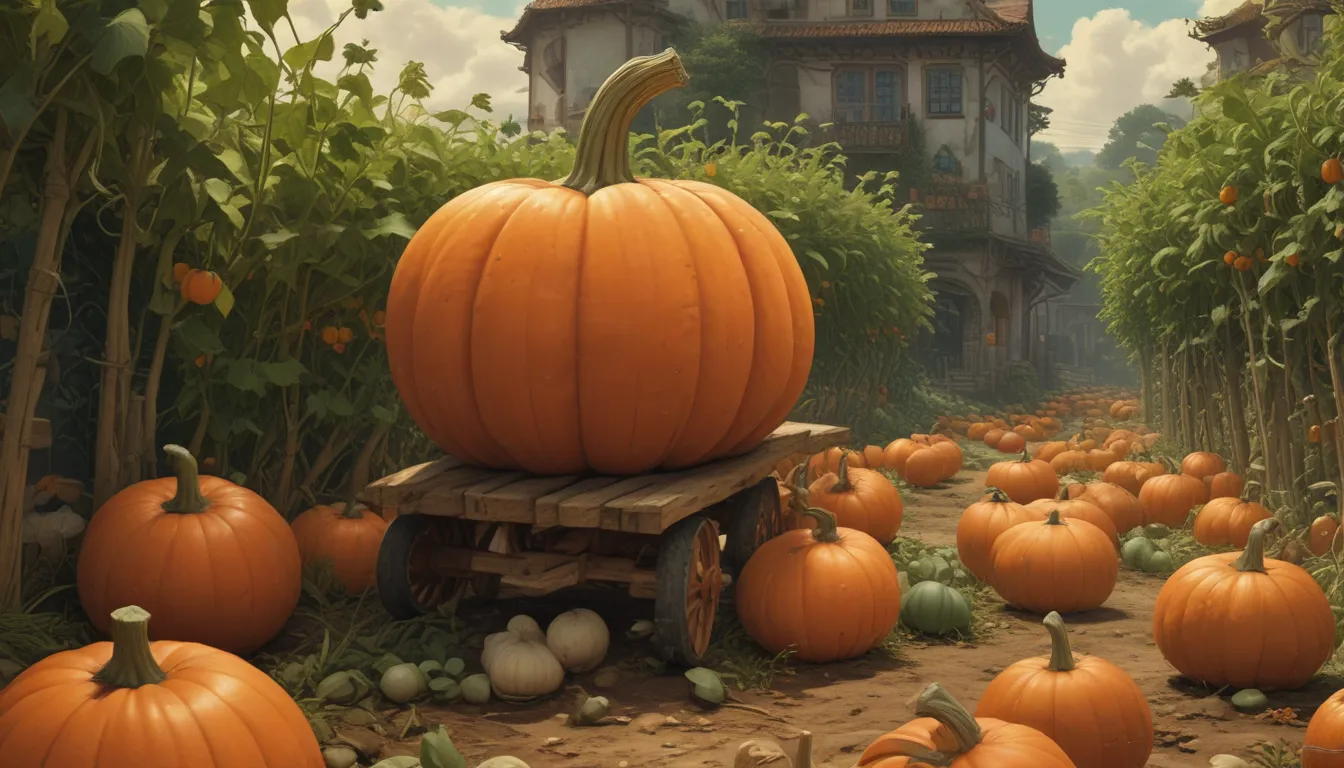Mastering the Art of Growing Pumpkins: A Complete Guide

If you’ve always dreamt of growing your own pumpkins, just like Linus from Peanuts, you’re in for a treat! The journey of nurturing those misshapen, massive pumpkins can be an incredibly rewarding experience. From planning your pumpkin patch to managing pests and diseases, there’s a lot to learn along the way.
In this in-depth guide, we’ll cover everything you need to know about successfully growing your own pumpkins.
What You’ll Learn
Here’s a sneak peek of what’s in store for you:
- Planning for Your Pumpkin Patch
- Seed Saving and Starting
- How to Grow
- Growing Tips
- Cultivars to Select
- Managing Pests and Disease
- Harvesting
- Recipes and Cooking Ideas
- Quick Reference Growing Guide
Let’s dive right in!
Planning for Your Pumpkin Patch
Pumpkins thrive in USDA Hardiness Zones 3-9 and prefer slightly acidic to neutral soil with a pH of 6 to 7.0. To ensure the productivity of your patch, it’s best to start prepping your pumpkin patch at least a year in advance. Choose a sunny location with well-draining soil for optimal growth.
Here are some tips for preparing your pumpkin patch:
- Space the mounds about four to eight feet apart.
- Provide good drainage by mounding the soil and adding aged manure or compost.
- Start prepping the mound six months to a year before planting to ensure rich soil.
By prepping your pumpkin patch in advance, you’ll set the foundation for a successful growing season.
Seed Saving and Starting
If you’re collecting seeds from your own pumpkins, spread them out on a paper towel to dry. Plant your seeds directly in warm soil after the risk of frost has passed, typically around late May. Keep your seeds dry and labeled until the growing season begins.
Here are some seed saving and starting tips:
- Plant seeds directly in the soil, no need to start indoors.
- Ensure the soil temperature is around 70°F before sowing.
- Hybrids won’t grow true to seed, while heirloom varieties will.
Planting your seeds directly in the ground allows for faster germination and ensures optimal growth conditions for your pumpkins.
How to Grow
To ensure your vines thrive, keep them well-watered, hand-weed regularly, and fertilize them regularly. Pumpkins are voracious feeders, so be prepared to fertilize them once a month with a balanced mix.
Here are some growing tips to keep in mind:
- Keep your plants well-fertilized and watered.
- Avoid disturbing the roots by exclusively hand weeding.
- Pinch back additional growth to focus energy on existing fruit.
With proper care and attention, your pumpkin vines will flourish and produce healthy, vibrant fruits.
Cultivars to Select
Selecting the right cultivar is crucial for a successful pumpkin harvest. Different varieties have varying growing times, ranging from 75 to 100 days.
Here are some top picks for pumpkin cultivars:
- Baby Boo: Ideal for miniature white pumpkins, best suited for Zones 3-8.
- Cinderella: Great for decoration and baking, takes 90-150 days to mature.
- Howden: Perfect for carving, matures in about 115 days.
- Lil’ Pump-ke-mon: Attractive two-toned pumpkins for baking, harvestable in 100 days.
- Red Warty Thing: Unique and appealing, great for baking, harvestable in 110 days.
Selecting the right cultivar ensures a bountiful harvest of pumpkins that suit your needs, whether for decoration, carving, or baking.
Managing Pests and Disease
Pumpkins are susceptible to pests and diseases, requiring careful management to ensure a healthy crop. Common pests include herbivores like deer, rabbits, and rodents, while diseases such as powdery mildew and blossom end rot can impact plant health.
Here are some tips for managing pests and diseases:
- Monitor for herbivores and use deterrents like fences or repellents.
- Control insect infestations naturally with neem oil or Bt treatments.
- Watch for fungal diseases like powdery mildew and blossom end rot.
By staying vigilant and implementing preventative measures, you can protect your pumpkins from common pests and diseases.
Harvesting
Knowing when to harvest your pumpkins is crucial for enjoying a bountiful crop. Winter squash varieties may not all ripen simultaneously, so monitor each fruit for signs of readiness.
Here are some tips for harvesting your pumpkins:
- Use a sharp knife to cut the stem a few inches away from the fruit.
- Leave several inches of the stem intact for extended freshness.
- Check seed packets for maturity dates and harvest accordingly.
Proper harvesting ensures that your pumpkins are ripe and ready for culinary use or decoration.
Recipes and Cooking Ideas
Once you’ve harvested your pumpkins, the culinary possibilities are endless. From pies and muffins to soups and bread, pumpkins offer a wealth of options for delicious meals and treats.
Here are some cooking ideas for your pumpkin harvest:
- Roast the seeds for a nutritious snack.
- Use the flesh in curries, soups, or baked goods.
- Hollow out the shells for serving dishes.
Experiment with different recipes to make the most of your pumpkin harvest and enjoy a variety of seasonal dishes.
Conclusion
Growing pumpkins is a rewarding and enjoyable experience that yields beautiful fruits for decoration and delicious treats for meals. By following these tips and guidelines, you can successfully grow your own pumpkins and create a bountiful harvest.
Are you ready to embark on your pumpkin-growing journey? Let us know in the comments below! And for more information on growing pumpkins and other seasonal vegetables, stay tuned for additional guides and resources.
Remember, with a little love, care, and attention, your pumpkin patch can be a gourd-geous success this growing season!
Happy gardening!





